Table of Contents
- Understanding Your Puppy’s Whining Behavior
- Possible Reasons for Unexplained Puppy Whining
- Physical Health Issues to Rule Out
- Separation Anxiety and Attention-Seeking Behaviors
- How to Address Whining in Your Puppy
- Positive Reinforcement Training Techniques
- Crate Training and Calming Aids
- Seeking Professional Help for Persistent Whining
- Preventing Whining Through Proper Socialization
- Conclusion: Helping Your Puppy Overcome Unexplained Whining
Understanding Your Puppy’s Whining Behavior
Puppies communicate with their owners through a variety of vocalizations, including whining. Whining can be a sign of discomfort, fear, stress, anxiety, or a physical ailment. Understanding the context and meaning behind your puppy’s whining can help you address the issue and provide your furry friend with the support and care they need.
The Importance of Context
Whining behavior can be tricky to interpret, as it can be triggered by a range of factors. Some puppies may whine due to feeling bored or wanting attention, while others may whine as a reaction to external stimuli, such as loud noises or unfamiliar people. In some cases, whining may even be an expression of joy or excitement.
To understand why your puppy is whining, it’s important to pay attention to the context in which the behavior occurs. Take note of the time of day, the location, and any potential triggers that may be causing your puppy to whine. By doing so, you can gain a better understanding of your puppy’s emotional state and tailor your response accordingly.
Vocalization and Body Language
Whining is just one form of vocalization that your puppy may use to communicate with you. Pay attention to other sounds, such as barking or growling, and observe your puppy’s body language. Are they cowering or showing signs of aggression? Are they wagging their tail or jumping up and down?
By taking a holistic approach to understanding your puppy’s behavior, you can piece together the bigger picture and get a better sense of what your puppy is trying to tell you.
The Role of Socialization
Socialization is an essential component of your puppy’s development, and it can play a significant role in shaping their behavior. Puppies that have not been properly socialized may be more prone to whining and other unwanted behaviors, as they may feel uncomfortable or threatened in unfamiliar situations.
To help prevent whining in your puppy, make sure to socialize them from an early age. Introduce them to a variety of people, animals, and environments, and reward them for exhibiting positive behaviors. By doing so, you can help your puppy build confidence and feel more comfortable in a range of settings.
Conclusion
Understanding your puppy’s whining behavior is an important step in addressing the issue and providing your furry friend with the support they need. By paying attention to context, vocalization, body language, and socialization, you can gain a better understanding of what is causing your puppy to whine and take appropriate steps to prevent or manage the behavior.
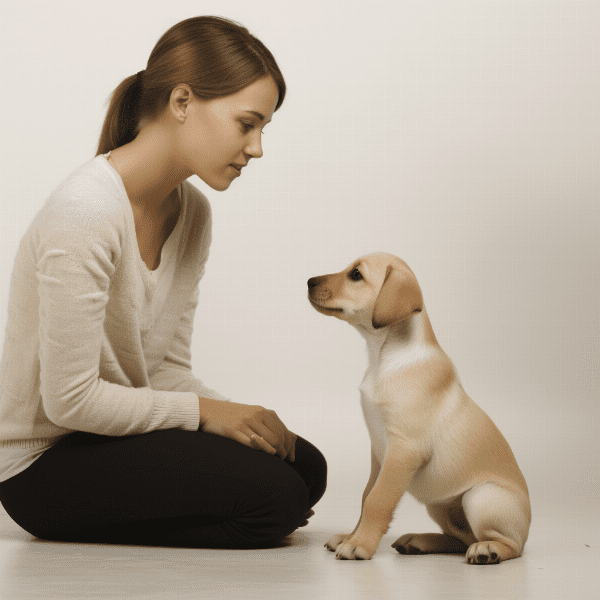
Possible Reasons for Unexplained Puppy Whining
While some puppies may whine for obvious reasons, such as needing to go outside or wanting attention, others may whine seemingly without cause. If your puppy is whining for no apparent reason, there may be an underlying issue that requires your attention. Here are some possible reasons why your puppy may be whining:
Pain or Discomfort
Puppies, like humans, can experience pain and discomfort that may not be immediately visible. If your puppy is whining excessively and showing signs of distress, they may be experiencing physical pain or discomfort. Common causes of pain in puppies include teething, digestive issues, and infections.
If you suspect that your puppy is whining due to pain or discomfort, it’s important to seek veterinary care. Your veterinarian can perform a physical examination and run any necessary tests to determine the underlying issue and provide appropriate treatment.
Fear or Anxiety
Puppies that are fearful or anxious may also whine excessively. This can occur in response to a range of stimuli, such as loud noises, unfamiliar people or animals, or new environments. Separation anxiety, a condition in which puppies become distressed when separated from their owners, can also lead to whining and other unwanted behaviors.
To help your puppy overcome fear or anxiety, it’s important to provide them with a sense of security and comfort. This may involve gradually introducing them to new situations or people, using positive reinforcement techniques to encourage calm behavior, or seeking the help of a professional trainer or behaviorist.
Conclusion
If your puppy is whining for no apparent reason, there may be an underlying issue that requires your attention. Pain or discomfort, fear or anxiety, and attention-seeking behavior are just a few possible reasons why your puppy may be whining. By identifying the underlying cause and providing appropriate care and attention, you can help your furry friend feel more comfortable and content.
 Puppy whining”>
Puppy whining”>Physical Health Issues to Rule Out
If your puppy is whining for no apparent reason, it’s important to rule out any physical health issues that may be causing the behavior. Here are some common physical health issues that can lead to whining in puppies:
Digestive Issues
Digestive issues, such as constipation, diarrhea, or stomach upset, can cause discomfort in puppies and lead to excessive whining. In some cases, puppies may also experience vomiting or loss of appetite.
Teething
Teething is a normal process that puppies go through as they develop their adult teeth. During this time, puppies may experience pain and discomfort in their gums, which can lead to excessive whining. You may also notice that your puppy is chewing on objects more frequently during this time.
To help your puppy through the teething process, provide them with appropriate chew toys and avoid giving them objects that may be harmful or indigestible. You may also consider using a teething gel or medication to help relieve your puppy’s discomfort.
Ear Infections
Ear infections are a common health issue in puppies that can cause discomfort and pain. In addition to whining, you may notice that your puppy is shaking their head or scratching at their ears more frequently. Ear infections can also cause discharge or foul odors.
If you suspect that your puppy is experiencing an ear infection, it’s important to consult with your veterinarian. Your veterinarian may recommend medication or other treatments to help clear up the infection and relieve your puppy’s discomfort.
Conclusion
Physical health issues can cause discomfort and pain in puppies that may lead to excessive whining. Digestive issues, teething, and ear infections are just a few examples of health issues that can lead to whining in puppies. By consulting with your veterinarian and providing appropriate care and treatment, you can help your puppy feel more comfortable and reduce their whining behavior.
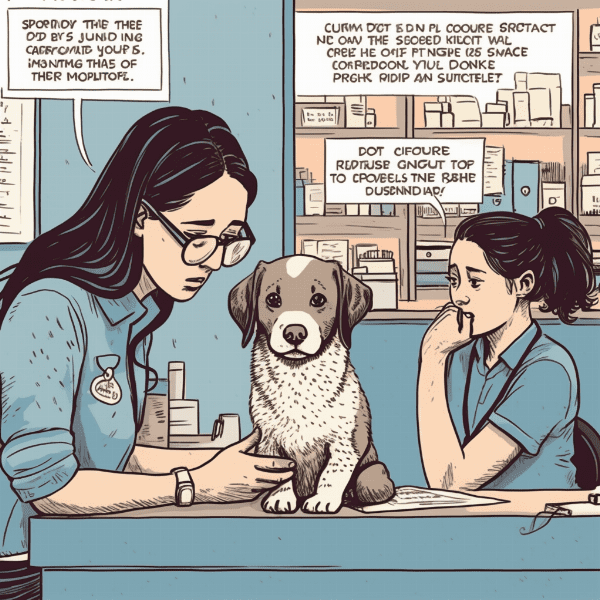
Separation Anxiety and Attention-Seeking Behaviors
Separation anxiety and attention-seeking behaviors are common causes of excessive whining in puppies. Here are some possible reasons why your puppy may be exhibiting these behaviors:
Separation Anxiety
Separation anxiety occurs when puppies become distressed or anxious when separated from their owners. This can lead to a range of unwanted behaviors, including excessive whining, destructive chewing, and house soiling.
To help your puppy overcome separation anxiety, it’s important to gradually introduce them to periods of alone time. This may involve crate training, providing them with safe and comfortable spaces to relax in, and using positive reinforcement techniques to encourage calm behavior.
Attention-Seeking Behaviors
Puppies are social animals that crave attention and affection from their owners. If your puppy is whining excessively and you respond by giving them attention, they may begin to use whining as a way to get your attention in the future. This can lead to a pattern of attention-seeking behavior that may be difficult to break.
To discourage attention-seeking whining, it’s important to avoid reinforcing the behavior. Instead of responding to your puppy’s whining, wait for a period of calm before giving them attention or affection. You may also consider providing your puppy with plenty of opportunities for exercise and playtime to help them burn off excess energy.
Conclusion
Separation anxiety and attention-seeking behaviors can lead to excessive whining in puppies. By understanding the underlying causes of these behaviors and providing appropriate care and training, you can help your puppy feel more comfortable and reduce their whining behavior. If you are struggling to address these behaviors on your own, consider seeking the help of a professional trainer or behaviorist.
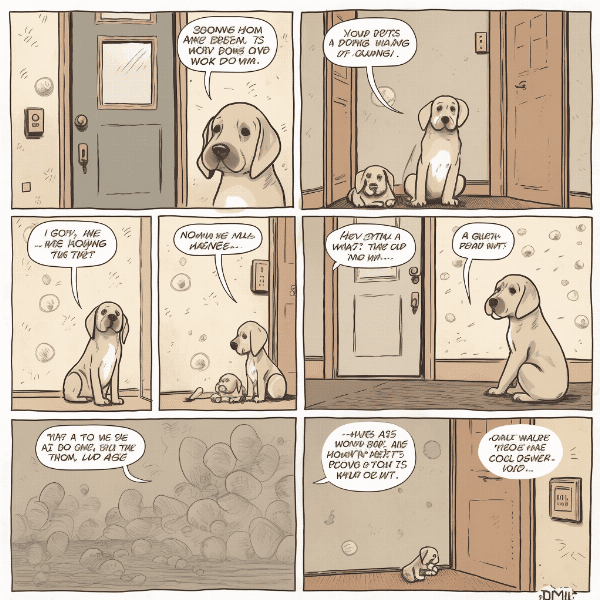
How to Address Whining in Your Puppy
If your puppy is whining excessively, it’s important to take steps to address the behavior and provide your furry friend with the care and attention they need. Here are some strategies for addressing whining in your puppy:
Positive Reinforcement Training Techniques
Positive reinforcement training techniques can be an effective way to address whining in puppies. This involves rewarding your puppy for exhibiting calm and desirable behaviors, rather than punishing them for unwanted behaviors.
To use positive reinforcement techniques, identify the desired behavior you want your puppy to exhibit, such as calmness or quiet behavior, and reward them with treats, praise, or affection when they exhibit that behavior. Consistency and patience are key when using positive reinforcement techniques.

Positive Reinforcement Training Techniques
Positive reinforcement training techniques can be a highly effective way to address whining behavior in puppies. Here are some strategies for using positive reinforcement to train your puppy:
Identify Desired Behaviors
The first step in using positive reinforcement techniques is to identify the desired behavior that you want your puppy to exhibit. For example, you may want your puppy to exhibit calm behavior or to stop whining when left alone.
Reward Good Behavior
Once you have identified the desired behavior, the next step is to reward your puppy for exhibiting that behavior. Rewards can include treats, praise, or affection. The key is to provide the reward immediately after the desired behavior is exhibited, so that your puppy associates the behavior with the reward.
Consistency and Patience
Consistency and patience are essential when using positive reinforcement techniques. It may take some time for your puppy to learn the desired behavior, and it’s important to remain consistent in your training methods and rewards.
Avoid Punishing Unwanted Behaviors
Punishing unwanted behaviors, such as whining, can be counterproductive and may actually reinforce the behavior. Instead, focus on rewarding the desired behaviors and ignoring or redirecting unwanted behaviors.
Gradually Increase Difficulty
As your puppy becomes more proficient at exhibiting the desired behavior, gradually increase the difficulty level. For example, you may start by rewarding your puppy for exhibiting calm behavior for a few seconds, and gradually increase the time period until your puppy can exhibit calm behavior for several minutes.
Conclusion
Positive reinforcement training techniques can be a highly effective way to address whining behavior in puppies. By identifying the desired behavior, rewarding good behavior, remaining consistent and patient, avoiding punishment, and gradually increasing difficulty, you can help your puppy learn to exhibit calm and desirable behavior. With time and practice, positive reinforcement techniques can help your puppy grow into a well-behaved and happy adult dog.

Crate Training and Calming Aids
Crate Training
Crate training involves providing your puppy with a comfortable and safe space to relax in, which can help them feel more secure and reduce their whining behavior. Here are some tips for crate training:
- Introduce your puppy to the crate gradually, using positive reinforcement techniques to encourage them to enter the crate.
- Make sure the crate is large enough for your puppy to stand up, turn around, and lie down comfortably.
- Provide comfortable bedding and toys to help your puppy feel more comfortable and secure.
- Avoid using the crate as a punishment, and instead focus on making it a positive and comfortable space for your puppy.
Calming Aids
Calming aids can also be effective in helping to reduce whining behavior in puppies. Here are some examples of calming aids:
- Pheromone sprays or diffusers, which release calming pheromones that can help reduce anxiety and stress.
- Calming music or white noise, which can help mask external noises and provide a soothing environment for your puppy.
- Calming supplements or medication, which may be recommended by your veterinarian for more severe cases of anxiety or stress.

Seeking Professional Help for Persistent Whining
If your puppy’s whining behavior persists despite your best efforts, it may be time to seek the help of a professional trainer or behaviorist. Here are some reasons why seeking professional help may be necessary:
Underlying Medical Issues
If your puppy’s whining behavior is due to an underlying medical issue, such as pain or discomfort, a professional can help identify and address the issue. A veterinarian can perform a physical examination and run any necessary tests to determine the underlying cause of your puppy’s whining behavior.
Complex Behavioral Issues
Some puppies may exhibit whining behavior due to more complex behavioral issues, such as separation anxiety or fear. A professional trainer or behaviorist can help identify the underlying cause of the behavior and develop a tailored plan to address the issue.
Experience and Expertise
Professional trainers and behaviorists have the experience and expertise needed to address a wide range of behavioral issues in puppies. They can provide personalized advice and training techniques that are tailored to your puppy’s individual needs.
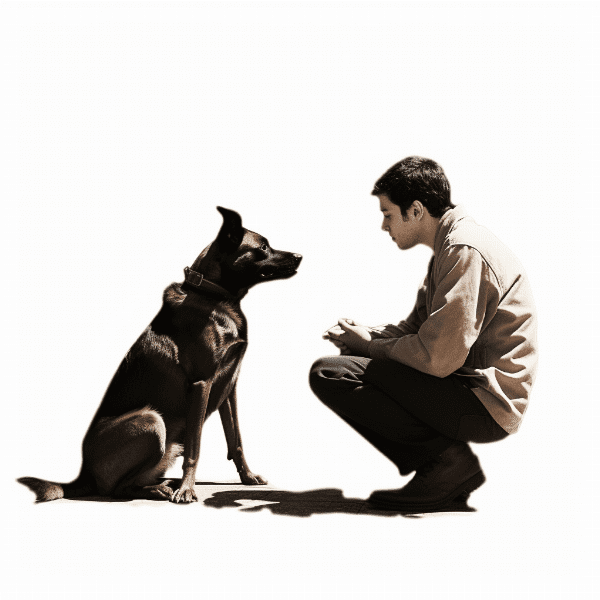
Preventing Whining Through Proper Socialization
Proper socialization is an important part of preventing whining behavior in puppies. Here are some strategies for socializing your puppy and preventing whining:
Early Socialization
Early socialization is key to preventing whining behavior in puppies. It’s important to expose your puppy to a wide variety of people, animals, and environments during their early months of life. This can help them feel more comfortable and confident in different situations, and reduce their risk of developing anxiety or fear-related behaviors.
Positive Reinforcement Techniques
Positive reinforcement techniques can also be used to reinforce calm and desirable behavior in puppies. By rewarding your puppy for exhibiting calm and quiet behavior, you can help them learn to associate positive outcomes with desirable behavior.
Consistent Routine
Establishing a consistent routine can also help prevent whining behavior in puppies. By providing your puppy with a predictable routine that includes regular exercise, playtime, and training sessions, you can help them feel more secure and reduce their risk of developing anxiety-related behaviors.
Conclusion
Proper socialization is an important part of preventing whining behavior in puppies. Early socialization, positive reinforcement techniques, and a consistent routine can all help reduce the risk of developing anxiety or fear-related behaviors. By providing your puppy with the support and care they need, you can help them grow into a happy and well-adjusted adult dog.
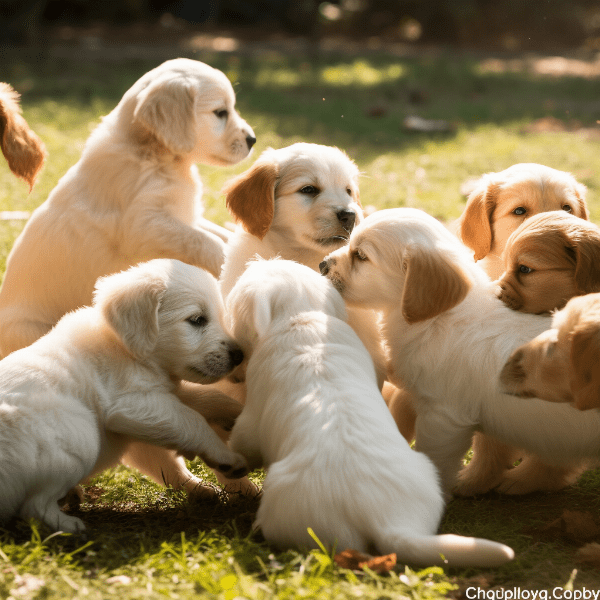
Conclusion: Helping Your Puppy Overcome Unexplained Whining
Unexplained whining behavior in puppies can be frustrating and challenging to address, but with the right strategies and approach, you can help your furry friend feel more comfortable and content. Here are some key takeaways from this guide:
Understand Your Puppy’s Behavior
Understanding your puppy’s behavior is an important part of addressing unexplained whining. By identifying the underlying cause of the behavior, you can develop a tailored plan to address the issue.
Positive Reinforcement Training
Positive reinforcement training is a highly effective way to address whining behavior in puppies. By rewarding desirable behavior and avoiding punishment, you can help your puppy learn to exhibit calm and desirable behavior.
Crate Training and Calming Aids
Crate training and calming aids can also be effective strategies for reducing whining behavior in puppies. Providing your puppy with a comfortable and safe space to relax in, and using calming aids to reduce anxiety and stress, can help them feel more comfortable and content.
Seek Professional Help
If your puppy’s whining behavior persists despite your best efforts, seeking the help of a professional trainer or behaviorist may be necessary. A professional can help identify any underlying medical or behavioral issues, and develop a tailored plan to address the issue.
Conclusion
Unexplained whining behavior in puppies can be a challenging issue to address, but with the right strategies and approach, you can help your furry friend feel more comfortable and content. By understanding your puppy’s behavior, using positive reinforcement training, crate training and calming aids, and seeking professional help when needed, you can help your puppy grow into a happy and well-adjusted adult dog.


